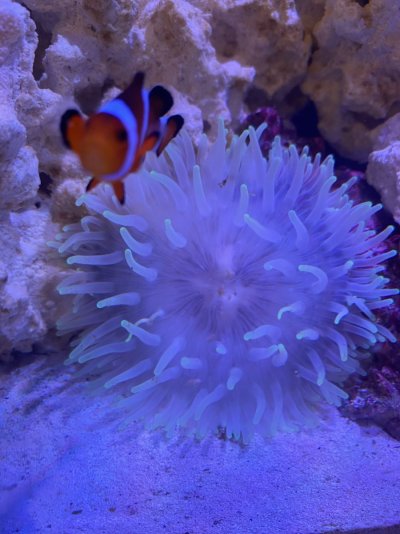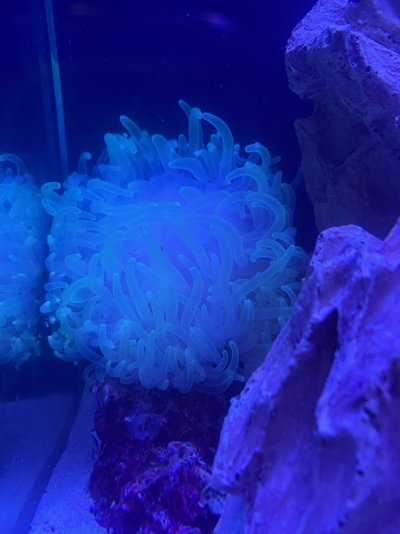I have a long tentacle anemone that I got from lfs. From some discussion in a different thread, some say the color of it looks like bleaching. My lfs said it is not bleaching and its actually called an “ultra” or an “ultra white” long tentacle anemone and that this color in the pictures are normal. It has remained this color since I got it a few weeks ago, remains open all day while closing up at night. It is also attached to the rock behind it. The darker lighting picture is from the day I got it and the other picture is from today.
I fed the anemone today (for the first time) a small piece of shrimp and it ate the whole thing.
Has anyone seen this color of lta before?


I fed the anemone today (for the first time) a small piece of shrimp and it ate the whole thing.
Has anyone seen this color of lta before?
















